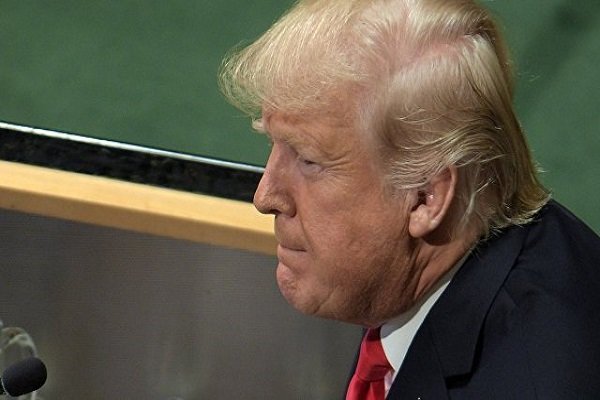Cyberspace geopolitics, a look at Trump’s first National Cyber Strategy

TEHRAN - The U.S. administration has recently released the first national cybersecurity strategy of the White House during Trump’s presidency.
The strategy, which is Washington’s most ambitious macro policy on cyberspace, has four pillars of priority and a number of low-key strategies or policies designed to fulfill these pillars.
Pillar I: Defend the homeland by protecting networks, system, functions and data;
Pillar II: Promote American prosperity by nurturing a secure, thriving digital economy and fostering strong domestic innovation;
Pillar III: Preserve peace and security by strengthening the ability of the United States —in concert with allies and partners — to deter and, if necessary, punish those who use cyber tools for malicious purposes;
Pillar IV: Expand American influence abroad to extend the key tenets of an open, interoperable, reliable, and secure internet.
The strategies have taken protection of people, territory, and lifestyle of the Americans as the forefront of the U.S. National Security Strategy, and the preservation of the public and private information network and the fight against cybercrime are the highlights of the plan.
The low-profile strategies or policy plans include:
The responsibility to secure Federal networks - including security systems – falls squarely on the Federal Government. Strengthen Federal contractor cybersecurity.
Strengthen critical infrastructure of the state and the private sector, which includes energy, banking, finance, health, transportation and communications and information technology.
The document points out that information and communication technology (ICT) in the U.S. is the basis of all parts of the country, and the preservation of democracy requires cybersecurity as the electoral infrastructure and the maintenance of the electoral process fall on the same Technology.
Prioritize national research and development investments based on cybersecurity.
Improve cybersecurity of transportation and maritime cybersecurity like shipping and shipping lines because the country's economy is based on global trade and transportation.
Attend to the impact of spatial issues such as satellite communications, navigation and position systems on cyberspace and the threats in this area.
Combat cybercrime and improve incident reporting, in particular combat transnational crime, theft of data and black markets
Preserve U.S. influence in the technology and development of cyberspace as an engine for economic growth, innovation and performance.
Foster a vibrant and resilient digital economy, because its economic security is dependent on national security and the basis of the country's economy falls on digital technology.
Incentivize an adaptable and secure technology marketplace to strengthen and encourage innovation in security technologies.
Collaboration with other countries to promote the standard. Invest in the next generation infrastructure, such as the 5G mobile phone, artificial intelligence and quantum computing. Promote free flow of data across borders as the countries in the world are more likely to restrict and protect data under the name of national security, which has a negative impact on the interests of American companies.
Maintain U.S. leadership in emerging technologies and strive to be on the edge of technology and reduce limitations on companies entering the market.
Maintain a strong and balanced intellectual property protection system, such as inventions, trademarks, and the avoid expenditure on research and development.
Build and sustain the talent pipeline, enhance the Federal cybersecurity workforce and use executive authority to highlight and reward talent.
Perform policy research, such as the Special Warfare Edition released in 2009.
Develop U.S. influence through cooperation with partner’s countries, industries, promote multi-stakeholder model against government-oriented framework.
The U.S. cybersecurity strategy seems to originate from the recent cyber-war developments in the country, the shift in power in the international system from military-security to economy and technology changes, and Trump’s views.
The sets of actions in the U.S. national cybersecurity strategy have the following objectives: prevent similar actions like Edward Snowden, a former contractor for the National Security Agency (NSA), who exposed the organization’s illegal activities such as the alleged Russia's involvement in the country's presidential election, and Chinese cyber-espionage on American industry, increased economic exploitation of the region Cybersecurity, combine U.S. economic and security benefits, makes use of changes in U.S. immigration laws and the elimination of the lottery system in order to take advantage of the intelligence capabilities of intellectuals, reduce the influence of other governments in international decision-making in the cyberspace by strengthening the multi-stakeholder process.
